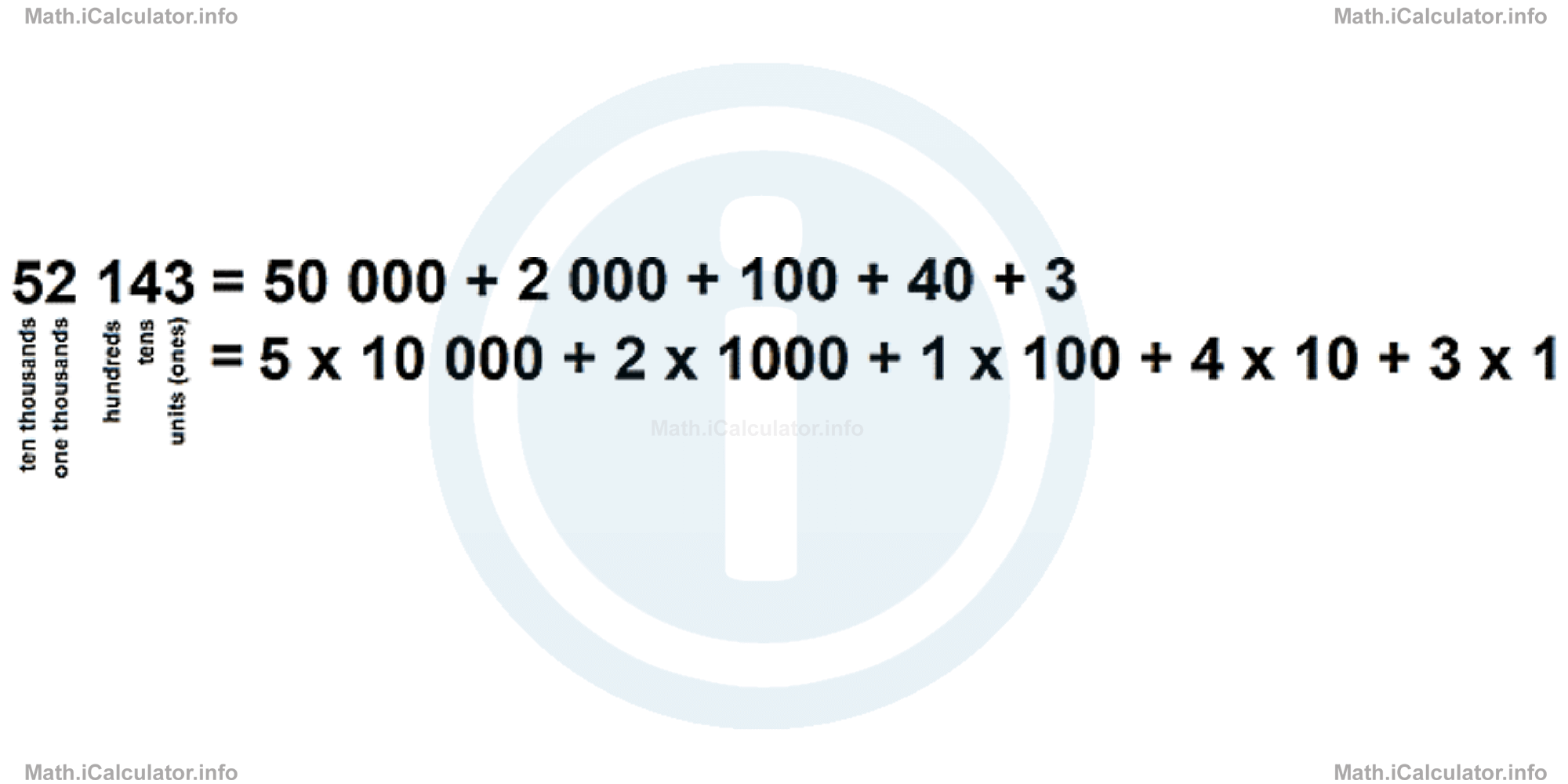Menu
Math Lesson 1.1.5 - Hindu-Arabic Numerals
Please provide a rating, it takes seconds and helps us to keep this resource free for all to use
Welcome to our Math lesson on Hindu-Arabic Numerals, this is the fifth lesson of our suite of math lessons covering the topic of Numbering Systems, a Historical View, you can find links to the other lessons within this tutorial and access additional Math learning resources below this lesson.
Hindu-Arabic Numerals
These are numerals we actually use in a lot of activities. Hindu-Arabic is a numbering system containing 10 digits: 0, 1, 2, 3, 4, 5, 6, 7, 8, 9 (so it is a decimal system). Despite originally being invented in India, it was brought into Europe by Arabs during the Middle Ages.
Numbers in the Hindu-Arabic numbering system are written using the combination of the above digits. The value of these digits increases by 10 times when moving one position to the left. The rightmost digit of a Hindu-Arabic number shows the units (ones), then the next digit shows tens, then hundreds, and so on. For example, the leftmost digit in the number 44 indicates 4 tens, while the rightmost one indicates 4 ones (or units). Look at the example below.

Example 1
- Convert the following Roman numbers to Hindu-Arabic ones: CCLXXVIII =
MCMXLIV =
MMCDXXXIX =
LVIDCCCXVI = - Convert the following Hindu-Arabic numbers into Roman ones: 94 =
463 =
3413 =
4102 =
Solution 1
- We have for the first number CCLXXVIII = 278 because CC = 200; LXX = 70 and .
For the second number we have MCMXLIV = 1944 because M = 1000; CM = 900; XL = 40 and IV = 4.
For the third number we have MMCDXXXIX = 2439 because MM = 2000; CD = 400; XXX = 30 and IX = 9.
For the fourth number we have LVIDCCCXVI = 56 816 because LVI = 56 000; DCCC = 800; X = 10 and VI = 6. - For the first number we have 94 = XCIV because XC = 90 and IV = 4.
For the second number we have 463 = CDLXIII because CD = 400; LX = 60 and III = 3.
For the third number we have 3413 = MMMCDXIII because MMM = 3000; CD = 400; X = 10 and III = 3.
For the fourth number we have 4102 = IVCII because IV = 4000; C = 100 and II = 2.
More Numbering Systems, a Historical View Lessons and Learning Resources
Whats next?
Enjoy the "Hindu-Arabic Numerals" math lesson? People who liked the "Numbering Systems, a Historical View lesson found the following resources useful:
- Hindu Arabic Numerals Feedback. Helps other - Leave a rating for this hindu arabic numerals (see below)
- Arithmetic Math tutorial: Numbering Systems, a Historical View. Read the Numbering Systems, a Historical View math tutorial and build your math knowledge of Arithmetic
- Arithmetic Video tutorial: Numbering Systems, a Historical View. Watch or listen to the Numbering Systems, a Historical View video tutorial, a useful way to help you revise when travelling to and from school/college
- Arithmetic Revision Notes: Numbering Systems, a Historical View. Print the notes so you can revise the key points covered in the math tutorial for Numbering Systems, a Historical View
- Arithmetic Practice Questions: Numbering Systems, a Historical View. Test and improve your knowledge of Numbering Systems, a Historical View with example questins and answers
- Check your calculations for Arithmetic questions with our excellent Arithmetic calculators which contain full equations and calculations clearly displayed line by line. See the Arithmetic Calculators by iCalculator™ below.
- Continuing learning arithmetic - read our next math tutorial: Number Sets, Positive and Negative Numbers and Number Lines
Help others Learning Math just like you
Please provide a rating, it takes seconds and helps us to keep this resource free for all to use
We hope you found this Math tutorial "Numbering Systems, a Historical View" useful. If you did it would be great if you could spare the time to rate this math tutorial (simply click on the number of stars that match your assessment of this math learning aide) and/or share on social media, this helps us identify popular tutorials and calculators and expand our free learning resources to support our users around the world have free access to expand their knowledge of math and other disciplines.
Arithmetic Calculators by iCalculator™
- Arithmetic Expressions Calculator
- Decimal Hexadecimal Number Calculator
- Hexadecimal Decimal Number Calculator
- Hindu Arabic To Roman Numbers Converter
- Identifying Factors Number Calculator
- Least Common Multiple And Greatest Common Factor Calculator
- Prime Numbers Identifier
- Greatest Common Divisor Calculator
- Number Format Converter
- Math Powers
- Square Root Calculator
- Exponents Calculator
- Binary Calculator
- Binary To Decimal Calculator
- Common Factors
- Imperial Converter
- Imperial To Metric Converter
- Length Converter
- Metric Converter
- Metric Units Conversion Calculator
- Roman Numerals Converter
- Rounding Numbers Calculator
- Round To Nearest Multiple Calculator
- Sig Fig Calculator
- Unit Rate Calculator
- Weight Conversion Calculator